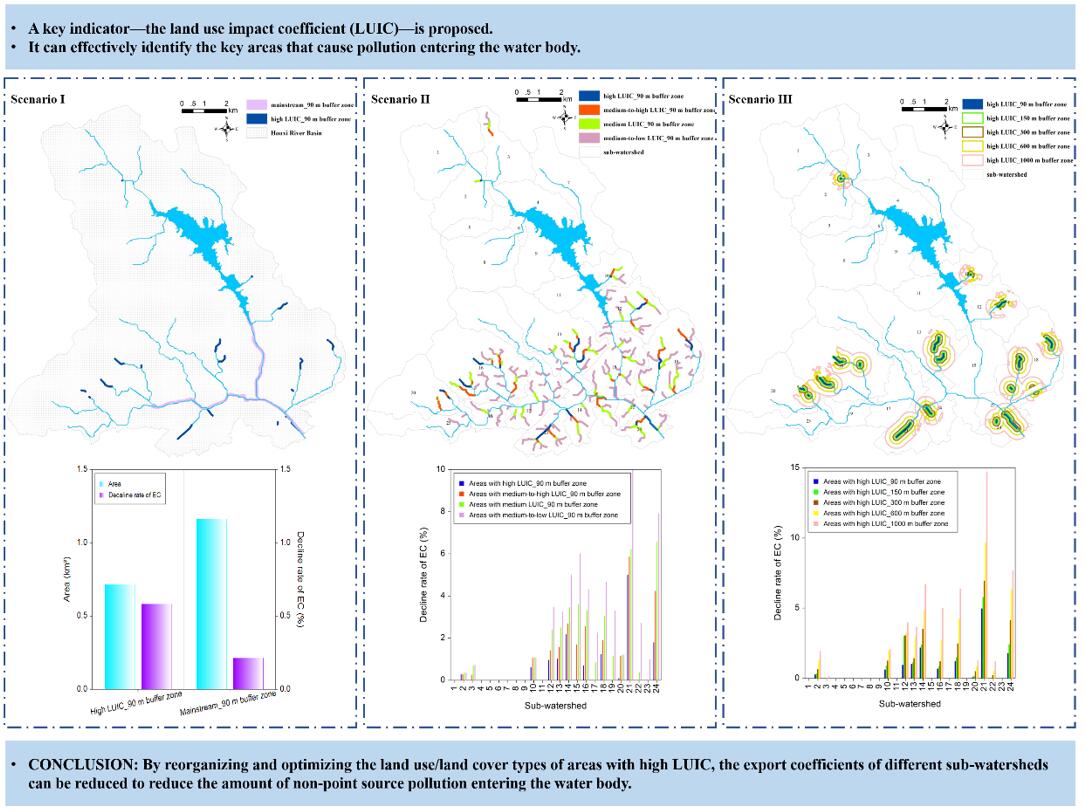Land use change is one of the important factors affecting the migration of non-point source (NPS) pollution. Watersheds in semi-urbanized areas are sensitive to human activities, especially to the change of land use, which leads to a significant change in NPS pollution. Many researchers agree that the best way to control NPS pollution is to increase forest/grassland area and establish grassland buffer zones. However, it is unclear which locations are fit for establishing grassland buffer zones. Additionally, it is not certain what scale/size of buffer zone can most effectively mitigate the migration of NPS pollution into water bodies.
The researchers took Houxi River Basin located in Xiamen City, Fujian Province, China-a typical small watershed in semi-urbanized area-as a case. They proposed a land use impact coefficient (LUIC) model to evaluate the impact of land use on export coefficient (EC) of NPS pollution. They found that not all ECs of NPS pollution of the riverside plots are high. If all the greening area along the river is reconstructed in accordance with the traditional buffer zone method, it may lead to large economic costs and resource wastes. Besides, they also found that the closer the sub-watershed is to the mainstream, the more effective the reduction of EC by optimizing land use/land cover in areas with high LUIC. Therefore, the LUIC model can be used to effectively identify the key areas that cause pollution entering the water body to select targeted measures (land management, spatial planning, etc.) to reduce the risk to aquatic ecosystem at a lower cost. By reorganizing and optimizing the land use/land cover or landscape pattern in key areas, the ECs of different sub-watersheds can be reduced to decrease the amount of NPS pollution entering the water body.
The research team is led by Professor TANG Lina from the Institute of Urban Environment, Chinese Academy of Sciences (IUE, CAS). Assistant Professor QIAN Yao is the first author of this paper. SUN Lang, CHEN Dingkai, LIAO Jiangfu and SUN Qian also made contributions to this work. Related findings were published in Science of the Total Environment with title of The response of the migration of non-point source pollution to land use change in a typical small watershed in a semi-urbanized area . This work was supported by the Crossing-Group Projects of the Key Laboratory of Urban Environment and Health, Chinese Academy of Sciences (KLUEH-C-201801) and the National Key R&D Program of China (2016YFC0502902).

The change of export coefficient (EC) of NPS pollution with land use/land cover optimization based on land use impact coefficient (LUIC). (Image by QIAN Yao)